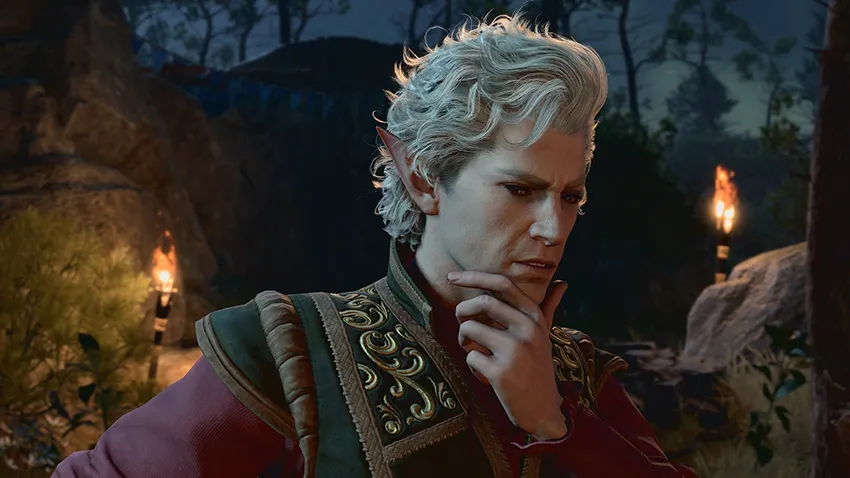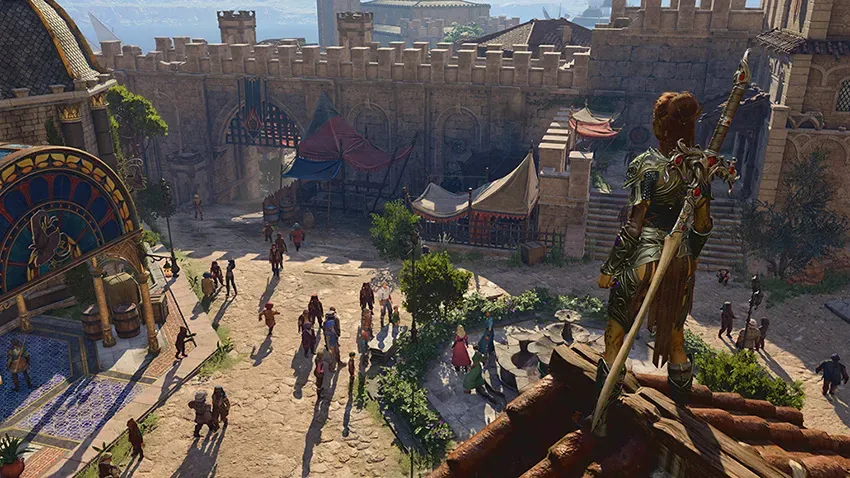Baldur's Gate III shares the name of its predecessors but might as well be considered a stand-alone video game. Both of its prequels were released at around the turn of the century, made by a different studio, and based on a version of Dungeons & Dragons (D&D) that was current for the time but wildly different from today's 5th Edition.
That might not mean much to readers unfamiliar with video and tabletop games, but a helpful comparison might be movie reboots, many of which are written, acted, and directed by different people than the originals. And while such films are often brushed aside as nostalgia-targeting cash grabs, a few do buck the trend and bring new life to a franchise, or even a whole genre.
This isn't to say that Baldur's Gate III is the Spiderman: Enter the Spiderverse of combat role-playing games (CRPGs). But it is a modern revival of the D&D-based CRPG.
For reference, the most recent original game in this subgenre was the crowdfunded Solasta: Crown of the Magister (2021) – a labor of love, to be sure, but one without the full weight of a resourced RPG veteran like Larian Studios, not to mention D&D's best-known setting, the Forgotten Realms. To find the most recent Forgotten Realms CRPG specifically, one has to dig back through years of remasters to Neverwinter Nights 2 (2006).
Needless to say, fans of the old D&D CRPGs have been waiting a long time for a game like Baldur's Gate III. Buyers should keep in mind, however, that the way it plays is much closer to Larian's previous title, Divinity: Original Sin II (2017), albeit with a distinct D&D twist.
Oil and water mix
Larian has gracefully transposed the rules of D&D: 5th Edition onto combat encounters with dynamic and responsive battlefields. By responsive I mean that many objects and terrain elements – whether a barrel, river, mushroom, or cauldron – are more than just props.
For example, if a wizard casts a fireball into a room full of wooden furniture, the wood will ignite, filling the space with searing embers and blinding smoke. Conjuring or throwing water will quench the fire. Zapping the puddle left behind will electrify it (and anyone standing inside).
Of course, if a character is physically strong enough, they can nix the fire and lighting altogether and just toss the furniture at their enemies instead. Or just toss their enemies at their enemies. How your character fights is up to you.
Mastering Baldur's Gate III's tactical, turn-based combat means learning to take careful stock of your surroundings and using them to your advantage, at a much deeper level than previous D&D-based CRPGs. In relation to these responsive battlefields, enemies can be brutally clever and comically dumb in equal measure, which can be entertaining either way.
Mind you, the combat system did inherit some quirks from Divinity: Original Sin II. Rather than using hexagons or squares on a grid for positioning characters, it lets players position them freely, meaning that in tense situations, victory can sometimes hinge on hunting for the precise pixel that will enable a crucial attack or other maneuver. It's also easy to clip the edge of a terrain hazard by accident, whether you're in combat or not.
The game does have certain tools in place to keep things from being too fiddly or frustrating, like a "tactical view" that switches the camera from isometric to top-down, but these can take some getting used to. Thankfully, players can choose between three difficulties on the fly if they find themselves in more fiddly situations than they'd prefer (or not enough).

Putting the "D" in D&D
The most prominent carry-over from the first two Baldur's Gate games might be the option to, over the course of the adventure, strike up romances or other intimate encounters with a cast of colorful characters. And there are a lot of options.
To name a few such "companions," there's Astarion, a vampire evocative of Tim Curry in Rocky Horror; Karlach, a massive, coin-operated warrior of hell; Wyll, the golden boy with a devil problem; Shadowheart, the definition of "I can fix her"; and Gale, the most burned-out gifted kid.
When the game begins, a player must choose a "primary" character to act as their avatar – either one of the six companions with more detailed story arcs, or more of a custom "blank slate" type. The player's choice of "class," or their fantasy archetype (wizard, barbarian, monk, etc.), will influence not only their best approach to combat but also their strengths while exploring and their options when speaking with other characters.
In its process of creating a custom character, the game is progressive in several small but important ways. Rather than labeling certain physiques as "male" or "female," it uses the term "body type" and labels them numerically. Some of the lineages (dwarf, elf, gnome, etc.) have only two body type options, which could be interpreted as enforcing a gender binary; half-orcs and dwarves, it seems, are ABAB (Assigned Bear At Birth).
But most other lineages have as many as four body types, and options like facial hair, gender identity, and even genitals are independent from others. During dialogue, characters will adjust their pronoun usage to account for a custom character's chosen identity.
Regardless of who the player chooses to be, every romanceable character is a romance option, premade characters included. The fan community has landed on the term "player-sexual" to describe this feature, since it's not like every character in the game is explicitly stated to be Pansexual or Bisexual.
Your mileage may vary on how the romance scenes are written. Depending on the actions the player takes throughout the story, they may find that several characters are already smitten with their avatar by the end of the second in-game day, or that a character will turn from cold to flirty on a dime. If fan testimonials are to be believed, polyamory is possible.
On the issues that plague the Western fantasy genre, Baldur's Gate III does a few radical things. Only species that are truly monstrous, like the demonic, hyenoid gnolls, go unnamed – and even then, the player's avatar can often gain glimpses into their minds.
Meanwhile, species like goblins, hobgoblins, duergar, and drow are all named and given at least one unique voice line; they're depicted not as generic monsters but as deeply flawed people with their own motivations. It's not perfect by any means, but it's progress.
The writing overall seems strongest in the first act, as it allows the greatest breadth of player choice, but it starts to show cracks by the second, and there seems to be a general consensus that the game's storyline is ultimately quite linear. The illusion of choice is strong. Fans are already anticipating a "definitive edition" that would improve elements of the story that might have been rushed. If the Divinity series is any indication, though, that could take up to a year.
In the meantime, there are technical improvements to be made. Other players and I have found that Baldur's Gate III runs worse the longer it remains open, even on high-end computers. Switching from DirectX 11 to Vulkan in the launcher seems to help but causes graphical glitches in some systems. There are also few bugs in animations (especially when skipping dialogue quickly) and in how certain creatures are coded, but these issues can probably be fixed with enough time.


